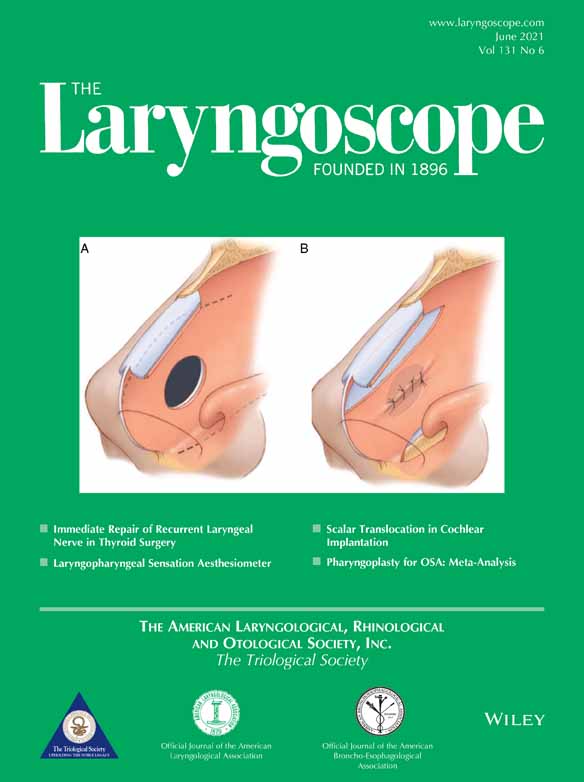Opioid Usage and Prescribing Predictors Following Transoral Robotic Surgery for Oropharyngeal Cancer
Editor's Note: This Manuscript was accepted for publication on November 9, 2020
The authors have no funding, financial relationships, or conflicts of interest to disclose.
Abstract
Objective/Hypothesis
Pain management following transoral robotic surgery (TORS) varies widely. We aim to quantify opioid usage following TORS for oropharyngeal squamous cell carcinoma (OPSCC) and identify prescribing predictors.
Study Design
Retrospective cohort study.
Methods
A consecutive series of 138 patients undergoing TORS for OPSCC were reviewed from 2016 to 2019. Opioid usage (standardized to morphine milligram equivalents [MME]) was gathered for 12 months post-surgery via prescribing record cross-check with the Massachusetts Prescription Awareness Tool.
Results
Of 138 OPSCC TORS patients, 92.8% were human papillomavirus (HPV) positive. Adjuvant therapy included radiation (XRT;67.4%) and chemoradiation (cXRT;6.5%). Total MME usage from start of treatment averaged 1395.7 MMEs with 76.4% receiving three prescriptions or less. Categorical analysis showed age <65, male sex, overweight BMI, lower frailty, former smokers, HPV+, higher T stage, and BOT subsite to be associated with increased MMEs. Adjuvant therapy significantly increased MMEs (TORS+XRT:1646.2; TORS+cXRT:2385.0; TORS alone:554.7 [P < .001]) and 12-month opioid prescription totals (TORS+XRT:3.2; TORS+cXRT:5.5; TORS alone:1.6 [P < .001]). Adjuvant therapy increased time to taper (total MME in TORS alone versus TORS+XRT/cXRT: 0 to 3 months:428.2 versus 845.5, 4 to 6 months:46.8 versus 541.8, 7 to 9 months:12.4 versus 178.6, 10 to 12 months:11.0 versus 4.4,[P < .001]). Positive predictors of opioid prescribing at the 4- to 6-month and 4- to 12-month intervals included adjuvant therapy (odds ratio [OR]:5.56 and 4.51) and mFI-5 score ≥3 (OR:36.67 and 31.94). Following TORS at 6-, 9-, and 12-month, 15.7%, 6.6%, and 4.1% were still using opioids.
Conclusions
In OPSCC treated with TORS, opioid use tapers faster for surgery alone versus with adjuvant therapy. Opioid prescribing risks include adjuvant therapy and higher frailty index.
Level of Evidence
4 Laryngoscope, 131:E1888–E1894, 2021




